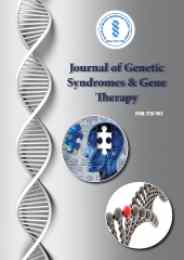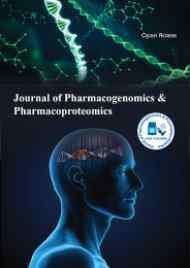Theme: Emerging New Innovations & Learning the Latest Trends in Genetics
Human Genetics Meet 2020
Join us for 9th World Congress on Human Genetics and Genetic Diseases
Update your skills, enhance your knowledge base, and broaden your horizons—all in one place!
Genetic Disorders, Human Genetics, Genetic Diseases, Epigenetics, Cancer Genetics, Genomics & Proteomics, Molecular Biology, Bioinformatics, Computational Biology, Genetic Counselling, Stem Cells, Neuro Genetics
Date:August 10-11, 2020
Venue: Dubai, UAE
About Human Genetics Conference
Human Genetics 2020 Conference welcomes you to attend the "9th World Congress on Human Genetics and Genetic Diseases" we cordially invite all the participants who are interested in sharing their knowledge and research in the arena of Genetics and Molecular Biology.
Human Genetics 2020 Conferences offers the scientific community a platform to share their knowledge in the field of Human Genetics and Genetic Diseases. This conference offers a comprehensive agenda presented through two plenary sessions and panel discussions for the benefit of professionals in the field of Medical, Dental, Pharmacy, Nursing and others, who are engaged in common health problems.
This event will feature sessions from leading experts in genetic diseases research, Personalized & Targeted Medicine including local and international professors, physicians, and government representatives. The purpose of the plenary and panel sessions is to facilitate discussions on early diagnosis, improve access and quality care, optimize the coordination of provider services, and foster high impact clinical research to expedite improved medical treatments. The conference mainly aims at the education of the medical community and dissemination of reliable information to at-risk populations, which are the most efficient ways to control genetic disorders among the people from different part of the world.
We intend to explore the challenges posed by genetic diseases and the most recent updates on pathophysiology, diagnosis, management, and prevention with emphasis on their impact on the UAE population. Certainly, this will raise awareness among medical professionals to provide effective prevention and treatment methods.
The global market for Genetic Testing is forecast to reach US$2.2 billion. Increasing knowledge about the potential benefits of genetic testing is one of the prime reasons for the growth of the genetic testing market. Advancements in the genetic testing space, aging population and a subsequent rise in the number of chronic diseases, and increasing incidence of cancer cases are the other factors propelling growth in the genetic testing market.
Who is Attending?
- Deans/Chairs, Vice Deans & Vice Presidents of Medical Institutions and Hospitals
- Professors and students from academia who are in the field of research, Medical and clinical research.
- Physicians, Business delegates, Directors / Managers & Business Intelligence Experts, Departmental Managers.
Benefits of Attending the Conference
-
The Career Guidance Workshops to the Graduates, Doctorates and Post-Doctoral Fellows, Certificate Accreditation from the Organizing Committee of presentation/ participation.
-
Accepted Abstracts will be published in the respective journals and will be labelled with a Digital Object Identification Number (DOI) provided by CrossRef (Free abstract publishing).
-
Speaker and Abstract pages created in Google on your name would get worldwide acknowledgement to your profile and Research.
-
Best Poster and Young Researcher Award.
Target Audience of Human Genetics Conference 2020:
- Genomics and Genetics Students
- Genomics and Pharmacogenomics Researchers
- Genomics and Pharmacogenomics Faculty
- Genomics Scientists
- Genomics Colleges
- Human Genetics Scientists
- Pharmacology Health Professionals
- Genetics Associations and Societies
- Geneticists
- Genetic Counselors
- Bio-pharmacists
- Business Entrepreneurs
- Training Institutes
- Software developing companies
- Data Management Companies
Track 1: Human Genetics
Human genetics, is study for Analysis of the parent's succession of characteristics. Human heritage in no fundamental way differs from that in other organisms. Human heredity research occupies a key genetic role. Much of this fascination derives from a deep desire to know who and why human beings are as they are. In a more practical way, Understanding human inheritance is critical in the prediction, diagnosis and treatment of genetic diseases. The quest to establish human health's genetic basis has given rise to the medical genetics industry. Medicine has generally given emphasis and purpose to human genetics, so it is often considered interchangeable with the terms of clinical genetics and human genetics
- Classical genetics
- Biochemical genetics
- Molecular genetics
Track 2: Gene Therapy and Gene Editing
A number of methods are under development for treating genetic disorders, including a inherited (eg, monogenic/Mendelian) conditions and acquired conditions such as cancer and infections. This topic reviews molecular techniques that can be used to alter the sequence or expression of a gene, including gene therapy, gene editing, and gene silencing.
- Genetic diseases
- Genetic testing
- Genetic counselling
Track 3: Genomics
Genomics is an interdisciplinary field of science focusing on the structure, work, headway, mapping, and modifying of genomes. A genome is a life structure's whole plan of DNA, including most of its characteristics. As opposed to innate characteristics, which insinuates the examination of individual characteristics and their parts in inheritance, genomics goes for the total depiction and assessment of characteristics, which arrange the age of proteins with the assistance of mixes and minister particles. In this manner, proteins make up body structures, for instance, organs and tissues and also control mixture reactions and pass on movements between cells. Genomics in like manner incorporates the sequencing and examination of genomes through businesses of high throughput DNA sequencing and bioinformatics to gather and separate the limit and structure of entire genomes.
- High throughput genomic technology
- Nutrigenomics
- Toxicogenomics
- Molecular genetics
Track 4: Human Fertilization and Embryogenesis
Fertilization and Embryogensis is the process of Fusion of sperm and ovum to form Zygote. Fertilization usually take place in oviduct. Ovum is in secondary oocyte stage during fertilization. Secondary oocyte is surrounded by two layer-zona pellucida and zona reticulate. Sperm move toward the secondary oocyte and bind to the receptor on zona pellucida. After sperm enter the oocyte, the zona pellucida become fertilization membrane preventing other sperm to enter. It is the entry of sperm that stimulate second meiotic division of Oocyte . Acrosome of sperm release proteolytic enzyme (Hyaluronidase) that digest the egg wall and then the pro-nucleuses fuse form zygote (2n).
Zygote undergoes repeated cell division called cleavage. Cleavage starts as the zygote moves down from oviduct to uterus 3-5 days after fertilization, zygote develop into ball like structure of cell with central cavity; blastocyst (Blastula stage).Outer cell of blastocyst is known as trophoblastic cell while inner cell is known as embryonic cell. Trophoblastic cell secrete HCG (human chorionic gonadotropin) hormone; similar in function as LH. It Prevent degredation of corpus luteum, therefore corpus luteum continue to secrete progesterone and oestrogen, which help continuous growth of endometrium wall causing menstruation cycle to stop.
Track 5: Thalassemia
Thalassemia is a genetic blood disorder that decreases the development of functional haemoglobin (the oxygen-carrying protein in red blood cells). It leads to a lack of red blood cells and low oxygen levels. this induces a loss of red blood cells and low blood oxygen levels, leading to a variety of health issues. Thalassemia, alpha-thalassemia and beta-thalassemia are two main types. Symptoms and signs may vary but may include mild anaemia, malignancy, tiredness, yellow skin discolouration (jaundice), and bone problems. Beta thalassemia is caused by changes (mutations) in the HBB gene while alpha thalassemia is caused by mutations in the genes HBA1 and HBA2. Both are inherited in an autosomal receive manner. Treatment depends on the type and severity of the condition but may include blood transfusions and or supplements of folic acid.
- Genetic mutations
- Splenomegaly
- Cooleys anemia
- Hepatomegaly
Track 6: Evolutionary and Population Genetics
A mutation is the source of genetic variation that leads to adaptive evolution and satification of the population. The fields of evolutionary and population genetics apply quantitative and empirical methods of research to population models, seeking to understand the dynamics of genetic variation and natural population change. These fields focus on molecular population genetics such as allele frequency, quantitative genetics, and recombination phenomena and their impact on genetic interconnection. The research projects of our Evolutionary and Population Genetics Faculty use genome-wide quantitative computational methods to explain the genetic structure and difference between populations and organisms, as well as complex phenotypes and evolutionary history (Li).
Track 7: Developmental Genetics & Quantitative Genetics
Developmental genetics is the study of how qualities control development and advancement of a living being for a mind-blowing duration cycle. A recently prepared egg cell or zygote contains a remarkable gathering of qualities that will control its improvement from a solitary cell into a fetus through examples of differential quality articulation during the time spent embryogenesis.
- Zygote
- Embryogenesis
Track 8: Genome Editing and Gene Regulation
CRISPR stands for short palindromic repeats regularly interspaced, which are the hallmark of a bacterial defence system that forms the basis for the genome editing technology CRISPR-Cas9. The term "CRISPR" or "CRISPR-Cas9" in the field of genome It is frequently used loosely to refer the different CRISPR-Cas9 and -CPF1 (and other) systems that can be programmed to target specific genetic code stretches and edit DNA at precise locations, as well as for other purposes, such as new diagnostic instruments. With these systems, researchers can permanently modify genes in living cells and organisms and in the future enable mutations to be corrected at specific locations in the human genome to treat genetic causes of disease. Certain methods, such as CRISPR-Cas13's, which target RNA offers alternate avenues for use. And unique features that have been leveraged for sensitive diagnostic tools, such as SHERLOCK, are now available.
- Plant genome editing
- Germline genome editing
Track 9: Paediatrics and Genetics
Fortunately most children are born healthy with no medical problems or birth defects. However, many children are born with differences in body structure, development of the brain,or body chemistry that can contribute to health, development, school performance, and/or social interaction problems. In order to identify the causes and natural history of these disorders, pediatric geneticists are trained. They may suggest tests and treatments that may help you understand and take care of your child. Pediatric geneticists can also help families understand whether certain disorders are inherited (from the genes) and provide screening to members of the family who may be at risk of having children with similar problems.
- Genetic testing
- Genes
- Pharmacogenetics
Track 10: Cytogenetics
Cytogenetics is the study of cell structure, area, and ability of chromosomes. It involves studying the number and presence of chromosomes (karyotyping), the physical region of chromosomal properties, and chromosomal actions in procedures such as cell division. The ordinary human cell consists of 46 chromosomes: 22 autosomal pairs, numbered 1-22 by decreasing length query, 1 array of gonosomes, or sex chromosomes
- Chromosomes
- Human mouse somatic cell hybrids
Track 11: Genome Integrity
The genomes consist of the total amount of genetic material required to encode human life's blueprint. For normal cell division, normal function of our tissues and organs, healthy ageing, and the prevention of diseases such as cancer, successful preservation of genome integrity and stability are important. Processes that regulate the preservation of genome integrity include sensing, signalling and repairing DNA damage, chromatin and chromosome DNA damage storage, cell cycle checkpoint regulation, and cell death control. Many of the fundamental aspects of the integrity of the genome — such as how cells feel and handle DNA damage — are still not well understood.
Track 12: Cancer Genetics
Cancer is a genetic problem where normal cell enhancement regulation is lost. Now, cancer biology is one of the fastest-growing cell differentiating abilities. At the nuclear level, a mutation(s) of DNA causes cancer, resulting in the development of twisted cells. The increasing dimension of these changes is guarded and occurs in external cells. In any case, the germ line is secured by a couple of individuals. The mutation(s) occurs in two cell characteristics classes on co_genes and the characteristics of the tumour silencer. Tumour silencer characteristics monitor cell division and extension camouflage under standard conditions. Changes in these characteristics lead to unregulated cell replication which results in tumours with odd cell cycles and growth of tumours. The features of the tumour silencer contribute to the disease by inactivating limit Biogenesis
- Biogenesis
- Cancer cytogenetics
- Cancer syndromes
Track 13: Neurogenetics
Neurogenetics studies the role of genetics in nervous system development and function. This recognizes neural features like phenotypes (i.e., observable or non-measurable manifestations of an individual's genetic make-up) and is mainly based on the fact. Individuals ' nervous systems are belonging to the same species, may not be the same. As the name implies, it draws elements from both neuroscience and genetics research, concentrating in particular on how its transmitted characteristics influence the genetic code that an organism bears. Mutations can have a wide range of effects on the individual's quality of life in this genetic sequence. In the context of neurogenetics, neurological diseases, behaviour and personality are all studied. In the mid to late 1900s, the field of neurogenetics emerged with developments and closely following advances made in the technologies available.
- Genetic therapies
- Monogenic neurologic diseases
- Polygenic diseases
Track 14: Nutrigenetics
Nutrigenetics refers to the application in nutritional research on genomic .Principle allowing us to formulate associations between specific nutrients and genetic factors, such as how food or food ingredients influence the expression of genes. It aims to identify the genes that influence the risk of diet-related diseases and also help in solving the mechanisms underlying these genetic predispositions. Nutrigenetics, on the other hand, shows the alignment of individuals ' genetic makeup with their reactions as well as specific dietary nutrients. It clarifies various individuals ' responses to the same nutrient. The present study addresses the role of genetic background and diet with their respect .The development of chronic conditions such as obesity, cardiovascular disease, hypertension and cancer. These two nutritional branches resemble two sides of a coin, facing opposite sides, but at the same time being intimately attached to each other. Scientific community collaborative efforts are required to strictly follow guidelines on experimental designs, evaluation, and nutritional research data processing. This technique will be helpful in building a reliable database that is useful to physicians and dieticians.
- Chronic diseases
- Gene diet interactions
Track 15: Pharmacogenetics
Pharmacogenetics is the study of how individuals, based on their genetic makeup or chromosomes, react differently to drug therapy. Diet, overall health, and the climate also have a significant influence on the reaction of medication, but none are better measures of how medicine is being handled than the genes.
- Molecular medicine
- Pharmacokinetics
- Predictive ADME
Track 16: Genetics Cardiovascular Diseases
The cardiovascular system, or circulatory system, delivers oxygen to the heart. It is made up of the heart, arteries, veins; capillaries.CVD is now the world's most frequent cause of death. There are, however, many ways to reduce the risk that these conditions may develop. The treatment, symptoms, and prevention of conditions that are part of CVD often overlap. We look at the different forms of CVDs in this article, their symptoms and causes, and how to prevent and treat them.
- Angina
- Arrhythmi
- Congential heart diseases
- Coronary artery disease
- Heart attack
- Heart failure
Track 17: Personalized Medicine and Pharmacogenomics
Personalized medicine hopes to tailor therapies to your genetic make-up one day. Modern drugs save millions of lives a year. Even if it works for other people, any medication might not work for you. Or it might cause severe side effects for you but not for someone else. Your gender, lifestyle and nutrition all have an effect on your drug response. Pharmacogenomics is the study of how the unique genetic structure (genome) of a person influences his or her medication response.
Track 18: Genetic Counselling
Genetic counselling is a mechanism by which individuals and families affected by genetic diseases.They are consulted to help them understand and respond to the health, emotional and family effects of genetic contributors to the disease. Interpretation of family and medical history to determine the probability of disease incidence or recurrence .Training on inheritance, screening, management, prevention, support recommendations to encourage informed choices and risk or illness adaptation.
-
Prenatal diagnosis
-
Endocrine disorders
-
Skeletal diseases
Track 19: Reproductive Genetics/Prenatal Genetics
Part of the Division of Maternal-Fetal Medicine, the Reproductive Genetics Service was created to help women with medical conditions encountered or made worse by a pregnancy or whose prenatal testing reveals a birth defect or genetic condition in the fetus.Genetics in obstetrics can be complicated because the genetic make-up of three people the mother, the father of the baby, and the unborn child – must be considered. Many women have a genetic condition that is unrecognized until they become pregnant.Reproductive Genetics Service geneticists and seven board-certified counselors help couples understand how genetics can affect their pregnancy, offering counseling for those planning to have a baby or women who are already pregnant.
- Process of gene therapy
- Gene therapy products
- Different vectors for gene therapy
- Gene therapy for malignant melanoma
- Gene therapy for sickle-cell disease
- Development of regenerative treatment models
Track 20: Immunogenetics
Immunogenetics is the branch of medical genetics which investigates the relationship between the immune system and genetics. Autoimmune disorders, such as diabetes type, are complex genetic traits that are caused by immune system defects. Identifying genes that define immune defects can identify new target genes for therapeutic approaches.
- Medical genetics
- Auto immune diseases
- Diabetes
Market Scenario
Genetics is nothing but the study of genes, their capacities and impacts. Atomic genetics, formative genetics, populace genetics and quantitative genetics, and human genetics are different sorts of hereditary investigations. Human genetics is the investigation of legacy in people, i.e., it is the investigation of legacy of attributes in kids from guardians. It incorporates the investigation of quality articulation, quality structure, transformation examination, cytogenetic and genomic imaging, genome structure and association, hereditary and physical mapping, malady affiliation contemplates, atomic diagnostics, genetics of complex illnesses, epistatic collaborations, and different ideas. It additionally decides different hereditary components in charge of ailments. It offers different points of interest, for example, distinguishing proof and determination and treatment of different illnesses, for example, malignant growth, cardiovascular sicknesses, and other hereditary maladies.
The worldwide human genetics advertise is driven by the expanding number of patients with hereditary ailments and expanding social insurance use by significant economies over the globe. Besides, the developing mindfulness about hereditary maladies, expanding interests in innovative work, and rising government bolster fuel the market development. Be that as it may, different variables control the development of the market, for example, greater expense of instruments and absence of gifted experts.
Worldwide Human Genetics Market is anticipating a solid development at a CAGR of 11.5% amid the estimate time frame.
Target Group
- Medical Research Laboratories
- Academic Medical Institutes and Universities
- Research and Development Companies
- Genetics & Genomic Industries
Regional Analysis
- America is the biggest market for human genetics inferable from the advancement in the diagnostics and medicinal innovation and broad utilization of new advances in genetics. Furthermore, the nearness of key players in the market likewise fills the market development. The U.S. is the biggest market for human genetics with an expansion in the number of concentrates in genetics and its significance in social insurance.
- The European market for human genetics is driven by the rising pervasiveness of various unending hereditary infections and expanding government support for innovative work exercises. In Germany, being the biggest market, the development is represented by the rising spotlight on research exercises by real market players in the field of genetics and innovative headway.
- In the Asia Pacific, the market is energized by the expanding mindfulness about research in hereditary infections and consistent ascent in the predominance of hereditary illnesses. Significant nations adding to the market development are China, Japan, and India because of expanding accessibility of research offices and nearness of talented workforce, for example, explore researchers and others.
- The Middle East and Africa holds minimal offer in the worldwide human genetics market and demonstrates a consistent development because of the rising interest for social insurance administrations and research exercises, poor financial condition, and less improvement in medicinal offices, particularly, in Africa.
For More details visit: https://humangenetics.geneticconferences.com/

Conference Highlights
- Human Genetics
- Gene Therapy and Gene Editing
- Genomics
- Human Fertilization and Embryogenesis
- Thalassemia
- Evolutionary and Population Genetics
- Developmental Genetics & Quantitative Genetics
- Genome Editing and gene Regulation
- Paediatrics and Genetics
- Cytogenetics
- Genome Integrity
- Cancer Genetics
- Neurogenetics
- Nutrigenetics
- Pharmacogenetics
- Genetics Cardiovascular Diseases
- Personalized Medicine and Pharmacogenomics
- Genetic counselling
- Reproductive Genetics/Prenatal Genetics
- Immunogenetics
To share your views and research, please click here to register for the Conference.
To Collaborate Scientific Professionals around the World
| Conference Date | August 10-11, 2020 | ||
| Sponsors & Exhibitors |
|
||
| Speaker Opportunity Closed | |||
| Poster Opportunity Closed | Click Here to View | ||
Useful Links
Special Issues
All accepted abstracts will be published in respective Our International Journals.
- Journal of Molecular and Genetic Medicine
- Journal Journal of Pharmacogenomics & Pharmacoproteomics
- Journal of Genetic Syndromes & Gene Therapy
Abstracts will be provided with Digital Object Identifier by






